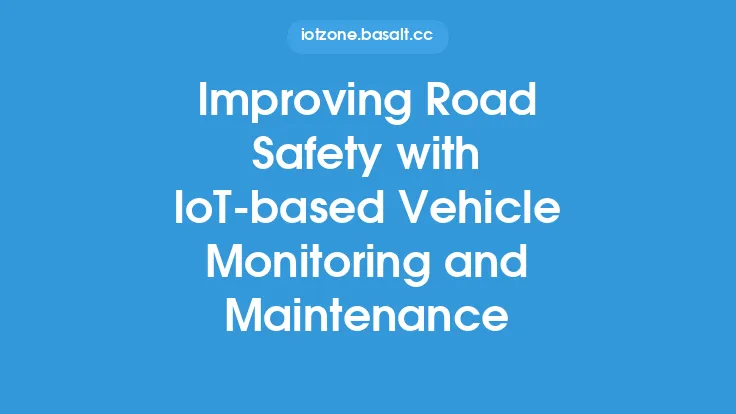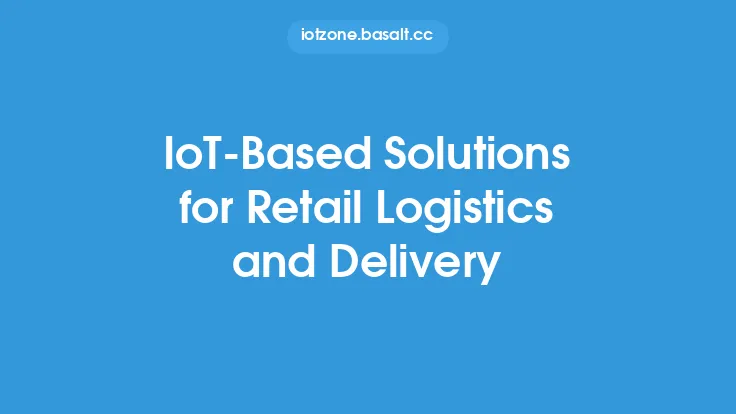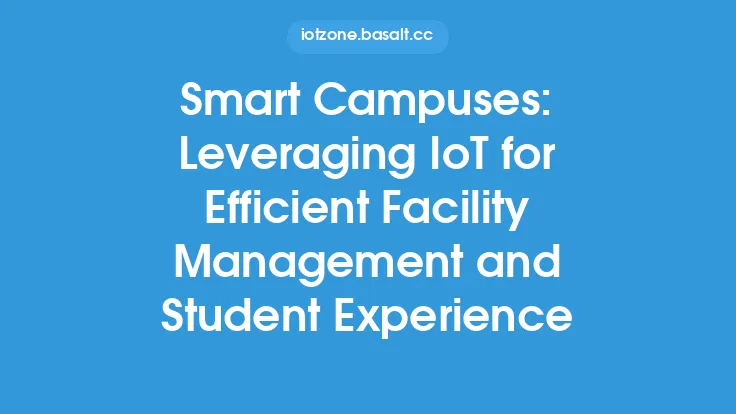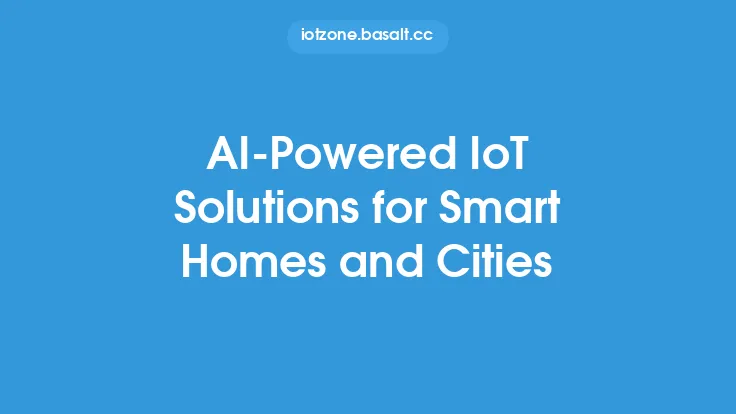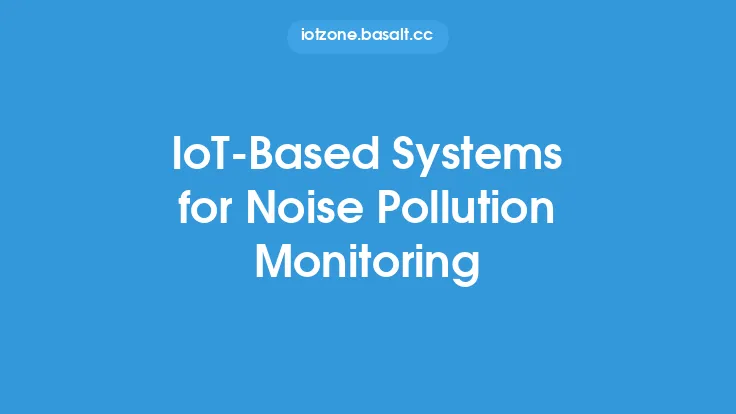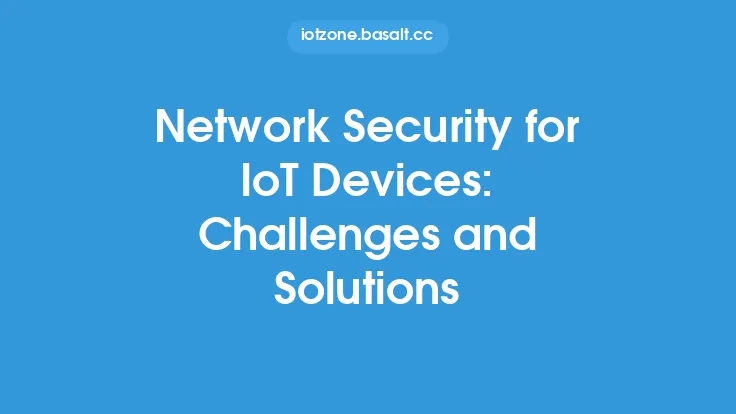The increasing concern for student safety and security on campus has led to a growing demand for innovative solutions that can effectively address this issue. The Internet of Things (IoT) has emerged as a promising technology that can be leveraged to improve student safety and security on campus. By integrating various IoT devices and sensors, educational institutions can create a smart and secure campus environment that ensures the well-being of students, faculty, and staff.
Introduction to IoT-Based Safety and Security Solutions
IoT-based safety and security solutions for campuses involve the use of various devices and sensors that can detect and respond to potential threats in real-time. These solutions can be categorized into several types, including access control systems, surveillance systems, emergency response systems, and environmental monitoring systems. Access control systems use IoT devices such as smart locks, biometric scanners, and RFID tags to control and monitor access to campus buildings and facilities. Surveillance systems use IoT-enabled cameras and sensors to monitor campus activities and detect potential security threats. Emergency response systems use IoT devices such as panic buttons, sensors, and GPS trackers to quickly respond to emergencies and ensure student safety. Environmental monitoring systems use IoT sensors to monitor campus environmental conditions such as air quality, noise levels, and weather conditions.
Key Components of IoT-Based Safety and Security Solutions
The key components of IoT-based safety and security solutions for campuses include IoT devices and sensors, communication protocols, data analytics platforms, and cloud-based services. IoT devices and sensors are used to collect data on campus activities and environmental conditions. Communication protocols such as Wi-Fi, Bluetooth, and cellular networks are used to transmit data from IoT devices to the cloud or on-premise servers. Data analytics platforms are used to analyze data from IoT devices and sensors to detect potential security threats and respond to emergencies. Cloud-based services are used to store and process data from IoT devices and sensors, and to provide real-time alerts and notifications to campus security personnel.
Technical Requirements for Implementing IoT-Based Safety and Security Solutions
The technical requirements for implementing IoT-based safety and security solutions on campus include a robust network infrastructure, reliable power supply, and secure data storage and transmission. A robust network infrastructure is necessary to support the transmission of data from IoT devices and sensors to the cloud or on-premise servers. A reliable power supply is necessary to ensure that IoT devices and sensors are always operational. Secure data storage and transmission are necessary to protect sensitive data from unauthorized access and cyber threats. Additionally, IoT-based safety and security solutions require regular software updates and maintenance to ensure that they are always operational and effective.
Benefits of IoT-Based Safety and Security Solutions
The benefits of IoT-based safety and security solutions for campuses include improved student safety and security, enhanced emergency response, and increased operational efficiency. IoT-based safety and security solutions can detect potential security threats in real-time and respond quickly to emergencies, ensuring that students, faculty, and staff are safe and secure. IoT-based safety and security solutions can also enhance emergency response by providing real-time alerts and notifications to campus security personnel. Additionally, IoT-based safety and security solutions can increase operational efficiency by automating routine security tasks and providing real-time insights into campus activities and environmental conditions.
Challenges and Limitations of IoT-Based Safety and Security Solutions
The challenges and limitations of IoT-based safety and security solutions for campuses include high upfront costs, technical complexity, and data privacy concerns. The high upfront costs of IoT devices and sensors, communication protocols, and data analytics platforms can be a barrier to adoption for many educational institutions. The technical complexity of IoT-based safety and security solutions can also be a challenge, requiring specialized technical expertise to design, implement, and maintain. Data privacy concerns are also a challenge, as IoT-based safety and security solutions collect and transmit sensitive data that must be protected from unauthorized access and cyber threats.
Best Practices for Implementing IoT-Based Safety and Security Solutions
The best practices for implementing IoT-based safety and security solutions on campus include conducting a thorough risk assessment, developing a comprehensive implementation plan, and providing ongoing training and support. Conducting a thorough risk assessment is necessary to identify potential security threats and vulnerabilities, and to determine the most effective IoT-based safety and security solutions. Developing a comprehensive implementation plan is necessary to ensure that IoT-based safety and security solutions are designed, implemented, and maintained effectively. Providing ongoing training and support is necessary to ensure that campus security personnel are aware of the capabilities and limitations of IoT-based safety and security solutions, and can use them effectively to respond to emergencies and ensure student safety and security.
Future Directions for IoT-Based Safety and Security Solutions
The future directions for IoT-based safety and security solutions for campuses include the use of artificial intelligence and machine learning algorithms to enhance threat detection and response, the integration of IoT devices and sensors with other campus systems such as facilities management and student information systems, and the development of more secure and reliable IoT devices and sensors. The use of artificial intelligence and machine learning algorithms can enhance threat detection and response by analyzing data from IoT devices and sensors to identify patterns and anomalies. The integration of IoT devices and sensors with other campus systems can provide a more comprehensive view of campus activities and environmental conditions, and enable more effective response to emergencies. The development of more secure and reliable IoT devices and sensors is necessary to protect sensitive data from unauthorized access and cyber threats, and to ensure that IoT-based safety and security solutions are always operational and effective.
